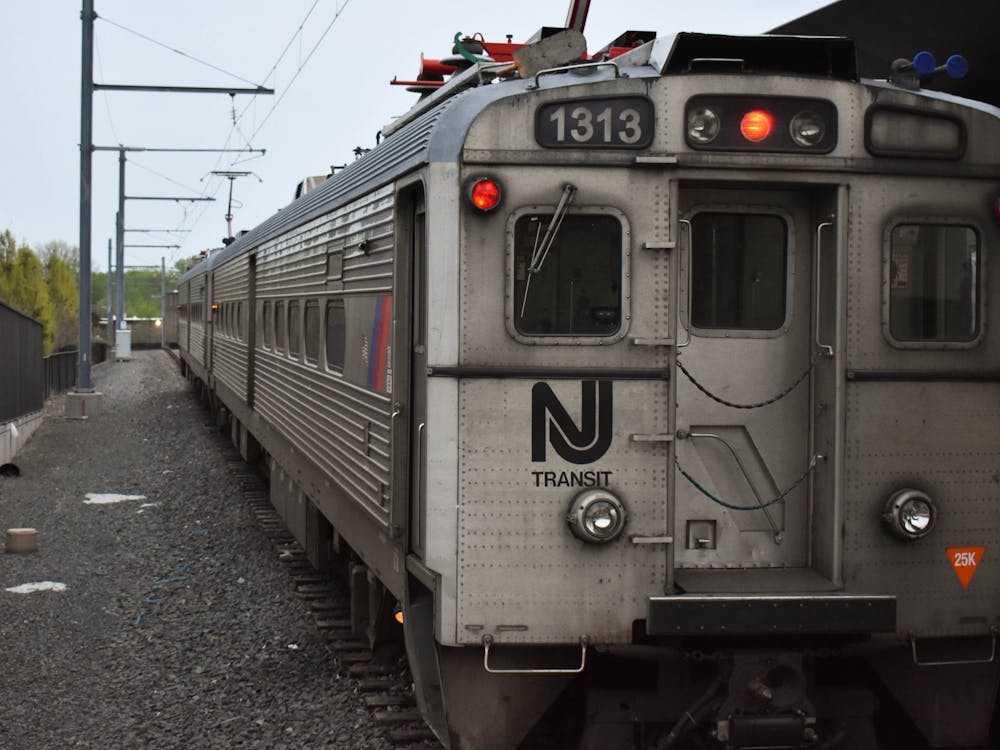The University and town must proceed based on objectives, the shared objectives of safety and service. There is widespread agreement that a new arts campus will greatly enhance the community with a new access road to the Lot 7 garage providing important improvements to traffic circulation. The municipalities, however, additionally seek to enhance the Dinky to a new level of service by converting it to light rail and extending it straight up to Nassau Street, an opportunity precluded if the Dinky were to terminate at the proposed new station.
Admittedly, having a streetcar that serves riders boarding in town would require reimagining the proposed pedestrian plaza as a space shared with transit, but one that will go further in mitigating risk than any other such trolley-pedestrian interface in the world. A measurable risk, yes, but less than that of simply crossing Washington Road.
My company, Princeton Interurban, has proposed rationalizing the Dinky by introducing an articulated light-rail vehicle that will set a new standard for efficiency and safety. The University has reviewed this concept with disinterest, citing the risk despite the low cost.
The operation would be the world’s first with 100 percent solar-powered traction and would draw current from the existing catenary only up to the new station. The vehicle would then proceed with power stored in ultracapacitors, minus the risk, visual intrusion and expense of overhead wires, through the Arts campus and north on University Place. The virtually silent railcar would have electronically generated trolley noise, flashing blue lights and the standard trolley bell and grade-crossing horn. The railcar would have no external handholds or footholds, nothing to snag or drag a pedestrian or to allow a miscreant to climb atop the vehicle.
The trackway through the pedestrian plaza would be illuminated with flashing lights as the train approaches, similarly to those of pedestrian crossing at McCarter Theatre. In addition, the municipalities would allow the University to cede the right-of-way to the towns, further reducing liability exposure. The new grade crossing into the Lot 7 garage would be the safest in the state; the railcar will either be stopped at the new station or slow for a stop before it crosses this new access road, which would have its own warning signals.
In summary, it is this noteworthy new paradigm — currently unrecognized as such — that could be thwarted by the University’s arguably unreasonable risk aversion.
Princeton’s new Arts and Transit Neighborhood would garner widespread and respected coverage. With an integrated light-rail system, it would be recognized for setting a new standard for safety in shared-space transit everywhere. It would be an inspiring example of a major, powerful institution and its surrounding community working together to achieve a win-win outcome.
The University would be able to continue with its plans, building on the enormous effort already committed and celebrating the generosity of Peter Lewis and the genius of Steven Holl. It should expect expedited municipal approval for the required zoning changes as well as genuine appreciation and accolades from the community: a win. Local residents would enjoy continued service to the old station, plus the extension of the line with the best trade-off between capital cost and enhanced service of any such project in the nation: another win.

New Jersey Transit and the state would immediately be freed from an $8,000-per-day subsidy obligation, the equivalent of forgiving a $50 million mortgage and a big win for Governor and Trustee Chris Christie. NJ Transit’s designated accountant has previously confirmed without equivocation that the Dinky can operate profitably.
The Borough Council is not caving to some vocal and narrow-minded minority carping on Facebook and elsewhere about a few hundred yards more to walk each day. It is taking a positive and visionary stand in support of the Dinky’s reaching its full potential, resisting the University’s effort to deny this critical community objective and desire. Municipal leaders want the Dinky to go beyond the old 1919 station to a new, 21st-century terminus at Nassau Street, with service increased from three to five roundtrips an hour. A circuitous compromise routing along the golf course would allow service only every half-hour.
This outcome is truly befitting “the smallest of the world’s great universities” and the town that gave that university its name. Surely this is a huge win for us all. The Dinky, currently an immense splinter in the robust flank of the University, would instead become another feather in its cap.
Rodney Fisk served on the Princeton Borough Council in the late 1980s and was a special student in ’81. He can be reached at rodneyafisk@msn.com.








